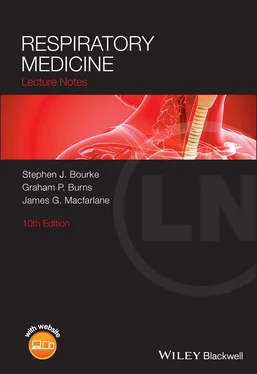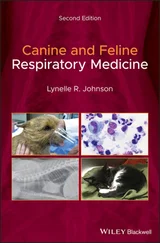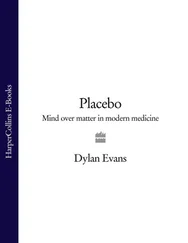Whereas VC and its subdivisions can be measured directly by spirometry, measurement of residual volume and TLC requires the use of helium dilutionor plethysmographymethods. In the dilution technique, a gas of known helium concentration is breathed through a closed circuit and the volume of gas in the lungs is calculated from a measure of the dilution of the helium, which, being an inert gas, is neither absorbed nor metabolised. This dilution method measures only gas in communication with the airways and tends to underestimate TLC in patients with severe airway obstruction, because of the presence of poorly ventilated bullae.
The body plethysmograph is a large airtight box that allows pressure–volume relationships in the thorax to be determined. When the plethysmograph is sealed, changes in lung volume are reflected by a change in pressure within the box. Plethysmography tends to overestimate TLC, because it measures all intrathoracic gas, including that in the bullae, cysts, stomach and oesophagus. Chest X‐raycan be used to give a very rough estimate of TLC. In airway disease, TLC is increased as a manifestation of hyperinflation and as a result of increased lung compliance in emphysema (see Chapter 1). TLC is reduced in restrictive lung disease (by definition).
Respiratory muscle function tests
Weakness of the respiratory muscles causes a restrictive ventilatory defect, with reduced TLC and VC. Comparison of VC in the erect and supine positions is useful, because the pressure of the abdominal contents on a weak diaphragm typically causes a fall of around 30% in supine VC. Chest X‐ray often shows small lung volumes with basal atelectasis and high hemi‐diaphragms. Ultrasound screeningmay show paradoxical upward movement of a paralysed diaphragm during inspiration. Global respiratory muscle function may be assessed by measuring mouth pressures. Maximum inspiratory mouth pressure, P I max, is measured during maximum inspiratory effort from residual volume against an obstructed airway using a mouthpiece and transducer device, and maximum expiratory mouth pressure, P E max, is measured during a maximal expiratory effort from TLC. When there is severe respiratory muscle weakness, ventilatory failure develops with hypercapnia.
Gas transfer (transfer factor for carbon monoxide)
At one time, the rate at which gases diffused across the alveolar–capillary membrane was thought to be the principal factor limiting gas exchange. The term diffusing capacitywas thus coined, defined as ‘The quantity of gas transported across in each minute for every unit of pressure gradient’. Although the measurement proved to be very useful clinically, it was later realised that it was affected by many other factors in addition to diffusion, particularly V/Q matching. It was therefore renamed transfer factor.
Clearly, it is the transfer of oxygen that is of most interest to clinicians. This is very difficult to measure in practice, however, as transfer of oxygen into the blood quickly becomes limited by the saturation of haemoglobin. Carbon monoxide is thus used as a surrogate for oxygen in this measurement. Very low concentrations are used so that haemoglobin remains avid for the gas as it passes through the alveolar capillary (and of course high concentrations would be dangerous).
The term ‘diffusion capacity’ ( D L CO) can still be found in some texts; this is synonymous with ‘transfer factor’ ( T L CO).
To measure T LCO, we need to know:
1 the amount of CO transferred per minute, and
2 the pressure gradient across the alveolar membrane (in effect, the alveolar partial pressure, as the partial pressure in blood is essentially zero).
The single‐breath method is shown in Fig. 3.8. The patient inspires a gas mixture of helium and carbon monoxide, holds their breath for 10 seconds and then breathes out. An initial volume equivalent to the dead space (the part of the respiratory tract not involved in gas exchange) is discarded and a sample of the expired gas is collected and analysed for alveolar concentrations of helium and carbon monoxide. The change in concentration of helium (which, being an inert gas, is neither absorbed nor metabolised) between the inspired and alveolar samples is the result of gas dilution and gives a measurement of the alveolar gas volume (V A). The expired concentration of carbon monoxide is also lower than the inspired level, but the fall is proportionately greater than in the case of helium because some of the carbon monoxide is absorbed into the bloodstream. The rate of uptake of carbon monoxide can then be calculated as the uptake per minute per unit of partial pressure of carbon monoxide (mmol/min/kPa).
Many factors influence T LCO, including:
V/Q imbalance (disturbed in many diseases, affecting lung parenchyma or vasculature)
the surface area of the membrane for diffusion (reduced in emphysema) Figure 3.8 Measurement of transfer factor by the single‐breath method. Schematic representation of the helium and carbon monoxide concentrations in the inspired mixture and in alveolar air during breath holding.
the thickness of the alveolar capillary membrane (increased in fibrotic lung disease)
the pulmonary capillary blood volume (increased in high cardiac output states)
the haemoglobin concentration.
Free blood in the lungs from pulmonary haemorrhage will also avidly absorb carbon monoxide and lead to an elevated T LCO.
Clearly, T LCO can be reduced by a number of disease processes within the lung. It is also reduced if there is simply ‘less lung’ (a reduced lung volume) participating in gas transfer (e.g. respiratory muscle weakness causing restriction or after pneumonectomy). It would be useful to be able to distinguish between these two very different mechanisms.
Transfer coefficient (KCO)is the transfer factor divided by V A. This tells us the transfer factor ‘per unit lung volume’. Like T LCO, KCO is reduced when there is intrinsic lung disease, but unlike T LCO, KCO is not diminished when a healthy lung is reduced in volume by some external factor.
In restrictive conditions, a reduced KCO suggests an intrapulmonary cause (e.g. fibrosis). In extrapulmonary causes (e.g. chest wall deformity, respiratory muscle weakness, obesity), the KCO tends to be elevated. (Reason: KCO is effectively telling us about the transfer of CO only in the alveoli that are ventilated. The non‐ventilated alveoli are effectively discounted because they don’t contribute to V A. As the V/Q matching system will divert blood away from the non‐ventilated alveoli, the ventilated alveoli will have more than their normal share of blood. The greater blood volume increases CO absorption and thus gas transfer.)
In obstructive conditions, a reduced KCO suggests COPD (emphysema). In asthma, the KCO may be elevated. (Reason: Asthma does not affect every airway to an identical degree; there is therefore an exaggerated heterogeneity of ventilation. As discussed already, KCO is more heavily influenced by the well‐ventilated areas which, because of V/Q matching, have more than their fair share of perfusion.)
In the presence of normal spirometry, a reduced KCO is a strong indicator of intrinsic lung disease (affecting the pulmonary vasculature or alveoli; consider pulmonary hypertension or a combination of emphysema and fibrosis). (Reason: the effects of emphysema and fibrosis on FEV 1:FVC ratio cancel each other out though both cause a diminution in gas transfer.)
Читать дальше











